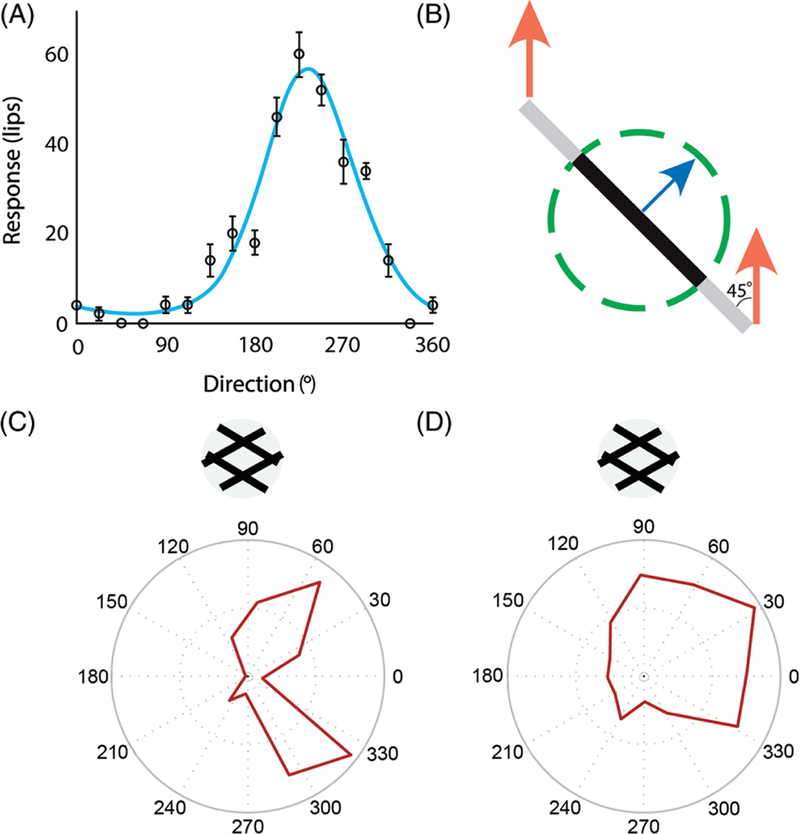Figure 11.
Motion coding in APC. (A) Direction tuning of a neuron in area 3b to bars scanned across its receptive field. Adapted, with permission, from (276). (B) The geometry of the aperture problem. The orange arrows show the actual motion of the bar; the blue arrow shows the motion of the bar as observed through the circular aperture (dashed circle). When an edge is observed through a circular aperture, the only available information about its direction of motion is along the axis perpendicular to its orientation. In other words, no time-varying information is conveyed along the parallel axis. In the example, a bar oriented at 45◦ and moving upward at speed s seems to be moving up and to the right with speed s = sin(45◦). Neurons in early stages of processing (APC or V1) experience the portion of a stimulus that impinges upon their small RFs, so through the equivalent of an aperture. (A) Response of a neuron in area 1 that responds to the motion of the component gratings but not to the global motion of the plaid. This neuron will respond if either of the component gratings is moving in its preferred direction. (D) Response of a neuron in area 1 that responds to the global motion of the plaid. This neuron’s response reflects the integration of local motion cues, each subject to the aperture problem, except those emanating from intersections, which convey unambiguous information about motion direction. Reproduced, with permission, from (277).

